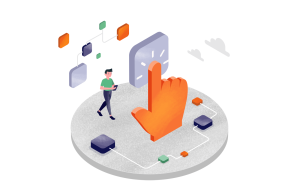
Let’s be honest. When you sell something specialized—say, artisanal sourdough starters, high-end mechanical keyboards, or ethically sourced mycelium leather—your marketing playbook can’t be the same as a big-box retailer’s. You’re not shouting into a megaphone hoping someone in a crowd of millions listens. You’re trying to have a meaningful conversation in a cozy, well-lit room filled with enthusiasts.
And that’s exactly where micro-influencer partnerships come in. They’re not just a strategy; for niche product categories, they’re often the only strategy that makes sense. Here’s the deal: it’s about finding the right voice, not the loudest one.
Why Micro Beats Macro in the World of Niches
Sure, a celebrity endorsement can create a tidal wave of awareness. But for a niche product, that wave often crashes on the wrong shore, leaving barely a trickle of actual, engaged customers. A micro-influencer, typically with a following between 1,000 and 100,000, operates differently. Their audience isn’t a random collection of people; it’s a community built on shared, specific interests.
Think of it this way. If you sell a new type of ultra-realistic model paint, would you rather partner with a general “lifestyle” influencer with 2 million followers, or a dedicated scale modeler with 15k followers who hangs on their every brush stroke? The answer is obvious. The micro-influencer’s recommendation is trusted gospel. It feels like advice from a knowledgeable friend, not an advertisement.
The Tangible Benefits You Can’t Ignore
Beyond just “feeling” right, the data and practical outcomes back this up. The ROI on micro-influencer campaigns for niche markets is frequently staggering.
| Benefit | Why It Matters for Niche Products |
| Sky-High Engagement Rates | Micro-influencers often see engagement rates 5-10x higher than mega-influencers. Their comments are filled with genuine questions and excitement, not just emojis. |
| Authenticity & Trust | Their audience believes they use and vet the products they promote. This trust transfers directly to your brand, lowering the barrier to purchase. |
| Cost-Effectiveness | Partnerships can be structured with gifted products, affiliate commissions, or modest fees, making it accessible for small and medium-sized businesses. |
| Hyper-Targeted Audience | You’re not paying for wasted impressions. Almost every single person in their audience is a potential customer. |
Finding Your Perfect Micro-Influencer Match
Okay, so you’re sold on the idea. But how do you find these hidden gems? It’s less about casting a wide net and more about spearfishing in the right pond.
First, you have to go where your audience lives. Don’t just stick to Instagram. For truly niche product categories, the gold is often on platforms like:
- Reddit: Subreddits are the epitome of niche communities. Find the ones relevant to your product and see who the respected contributors are.
- TikTok: The algorithm is scarily good at surfacing micro-communities (#BookTok, #PlantTok, #ChessTok).
- YouTube: The home of in-depth, long-form content. A YouTuber with 8k subscribers who creates detailed tutorials is a powerhouse in their field.
- Discord & Forums: These are the digital watering holes for enthusiasts. Lurk, listen, and identify the key opinion leaders.
When you’re evaluating a potential partner, don’t just look at follower count. Scrutinize their engagement. Read the comments. Are they real conversations? Does the influencer respond? Look for quality of content and a clear, passionate expertise. A slightly awkward delivery with genuine passion will always outperform slick, disingenuous content in a niche market.
Crafting a Partnership That Doesn’t Feel Like an Ad
This is the most critical part. The second a micro-influencer’s content starts to feel scripted, you’ve lost the magic. The goal is collaboration, not command-and-control.
Here’s a simple framework to follow:
- Lead with Value, Not Transaction: Start by engaging with their content genuinely. Then, reach out with a personalized message that shows you know and appreciate their work.
- Provide Creative Freedom: You know your product, but they know their audience. Give them the key messaging points, but let them tell the story in their own authentic voice. They know what will resonate.
- Structure a Fair Deal: For many micro-influencers, a free product is a great start. For ongoing work, consider a mix of fee + commission. It aligns your goals and shows you value their effort.
- Think Beyond a Single Post: Can they do a tutorial series? An AMA (Ask Me Anything) in your social channel? A long-term affiliate partnership? Depth often beats a one-off blast.
Measuring What Truly Matters
Vanity metrics are a trap. For niche marketing, a “like” is nice, but a conversion is king. You need to track the things that impact your bottom line.
Use trackable links and unique discount codes for every single influencer you partner with. This is non-negotiable. It’s the only way to directly attribute sales. But also, pay attention to the qualitative data. The comments on their post are a free focus group. What questions are people asking? What features are they most excited about? This feedback is pure gold for product development and future marketing.
Track website traffic referrals from their platform. And, honestly, keep an eye on the growth and quality of your own social following post-campaign. Are you attracting real enthusiasts or just passive spectators?
The Human Connection is Your Ultimate Advantage
In a world saturated with impersonal, algorithmically-served ads, the micro-influencer partnership is a return to human-scale connection. It’s a reminder that marketing, at its best, isn’t about interruption. It’s about integration into existing communities and conversations.
For brands in niche product categories, this approach isn’t a mere tactic. It’s the core of building a legacy. It’s how you find not just customers, but advocates. It’s slow, it’s intentional, and it requires a genuine respect for the community you’re engaging with. But the loyalty it builds? Well, that’s something you simply can’t buy with a bigger budget.








